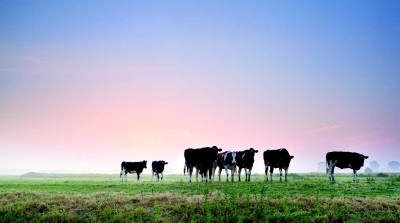Cultured Meat Could Help Save the Environment

By Mike Howie
Scientists are becoming high-tech farmers of the future by growing meat in their labs. But this isn’t some meat substitute, and it’s not genetically modified. It’s tissue-engineered food, and it’s already been made.
Cultured Meat
In 2013, Mark Post of Maastricht University grew a hamburger patty in a petri dish. It cost $300,000 for him to do it, and the taste was reportedly lacking, but it’s a start. He did it by taking stem cells from a cow, removing the fat cells, and putting the muscle cells in a bioreactor full of nutrients. In time, each muscle cell turned into a trillion new muscle cells, which were placed on a support structure to connect into muscle fibers. The look and feel of the meat was reportedly spot on, so all that’s left is to improve the taste and lower the price, which is already in the works.
Maastricht and his team are working on fat tissue now, which is what gives meat its flavor. As for the price, they’re already on track to reduce it to $11 per burger – a price not unheard of in upscale restaurants – or $36 per pound. This price will further decrease as the product moves into mass production. If all goes well, lab-grown meat will eventually enter supermarkets as a slightly pricier alternative to traditional meat, then in the following years it will become more common, to the point that it would be identical to traditional meat in both flavor and price.
Beef is just the beginning of all this. There’s already a team, led by Amit Gefen of Tel Aviv University in Israel, working on a lab-grown chicken. It’s an important progression: chicken accounts for one-third of all the meat eaten in the world. From there the process can move on to different cuts of meat, and even more animals.
Environmental and Health Benefits
Growing meat in labs instead of on farms will drastically cut down on pollution and resource consumption. According to the Food and Agriculture Organization (FAO), animal protein production in the U.S. requires 28 calories of feed for every calorie of meat produced. On top of that, one pound of beef can require more than 1,500 gallons of water to produce. And then there’s the land consumption – 26 percent of the Earth’s ice-free surface is used for grazing livestock. Finally, 15 to 18 percent of all global greenhouse gases come from livestock. All of this added together has a hefty impact on our resources and environment.
But, as projected today, mass producing cultured meat doesn’t have nearly as big of an environmental impact. It will use far less and water and put out far fewer emissions than raising animals, and will use less energy than everything but raising poultry.
It might even be a bit healthier to eat. There wouldn’t be large groups of animals in one relatively small space spreading diseases to one another, meaning outbreaks like swine flu and avian flu would be far less likely. Similarly, the meat wouldn’t be exposed to as much dirt and bacteria, which are what lead to food poisoning from things like E.coli and Salmonella. Eventually the production process will be entirely sterile, meaning antibiotics would no longer be necessary.
And it’s not just that there would be less risk of illness and disease with cultured meat – it could actually be more nutritious. Natural meat contains saturated fatty acids, which are known to contribute to cardiovascular disease and type-2 diabetes. But with cultured meats, scientists can make and add whatever fats they want, such as omega-3 fatty acids, which are a much healthier option. They could even fortify the meat by adding vitamins to it.
Not So Fast
The science has a lot of promise to it, and the benefits are something many people will agree on. But this is something that’s going to take a while to become a common part of our culinary lives. These are just the early days of cultured meat, and it will take time to refine the process and begin production on any kind of large scale.
One day, however, you’ll be able to eat a steak that really earns a cruelty-free label.